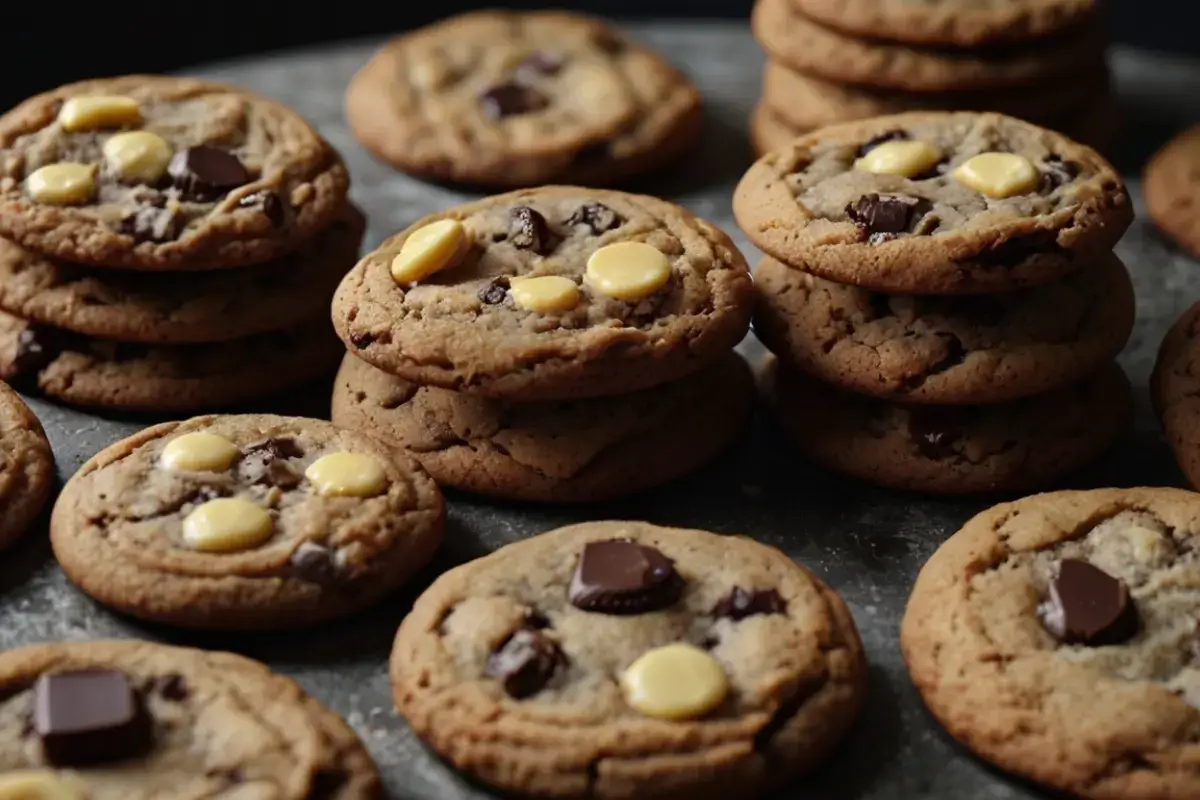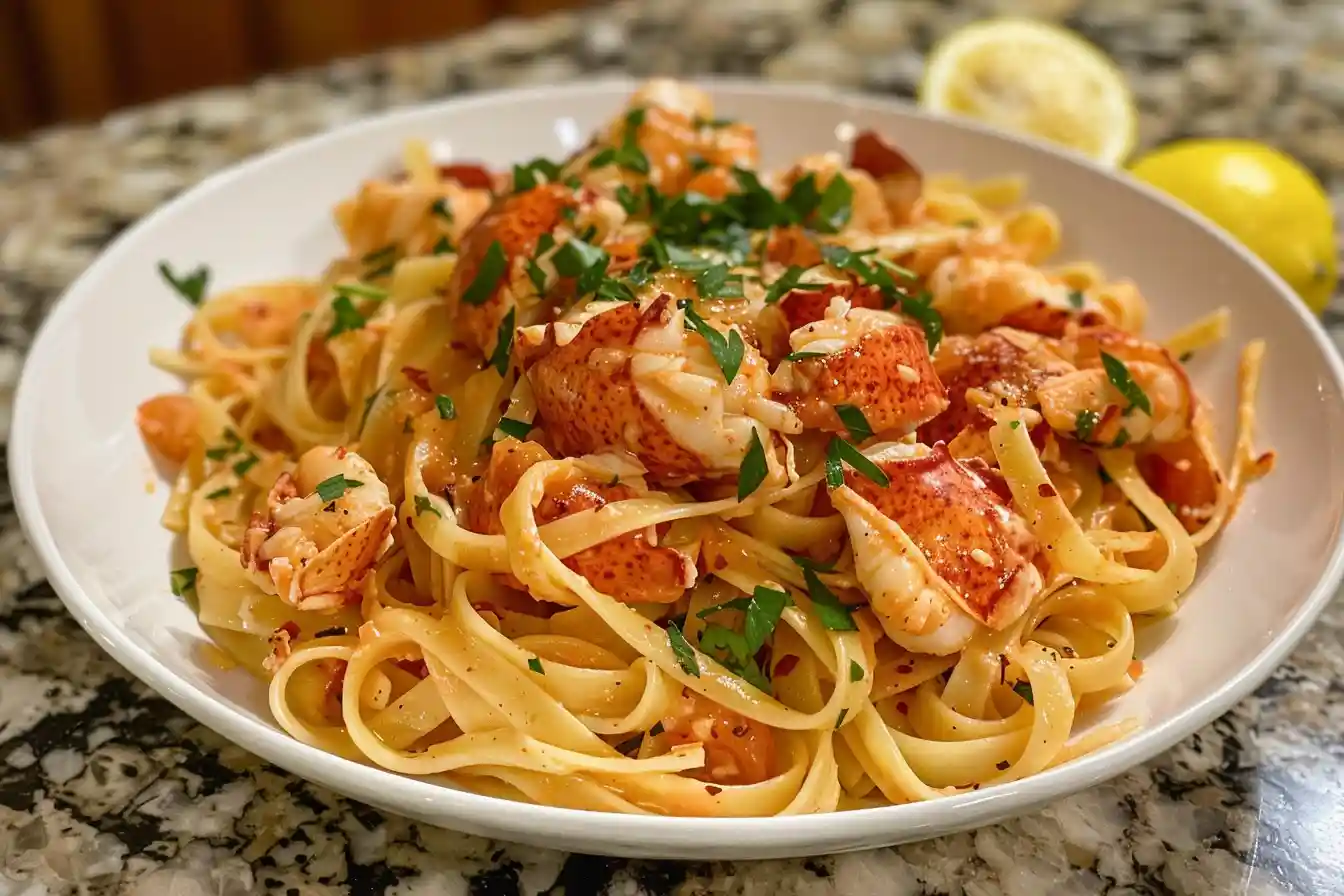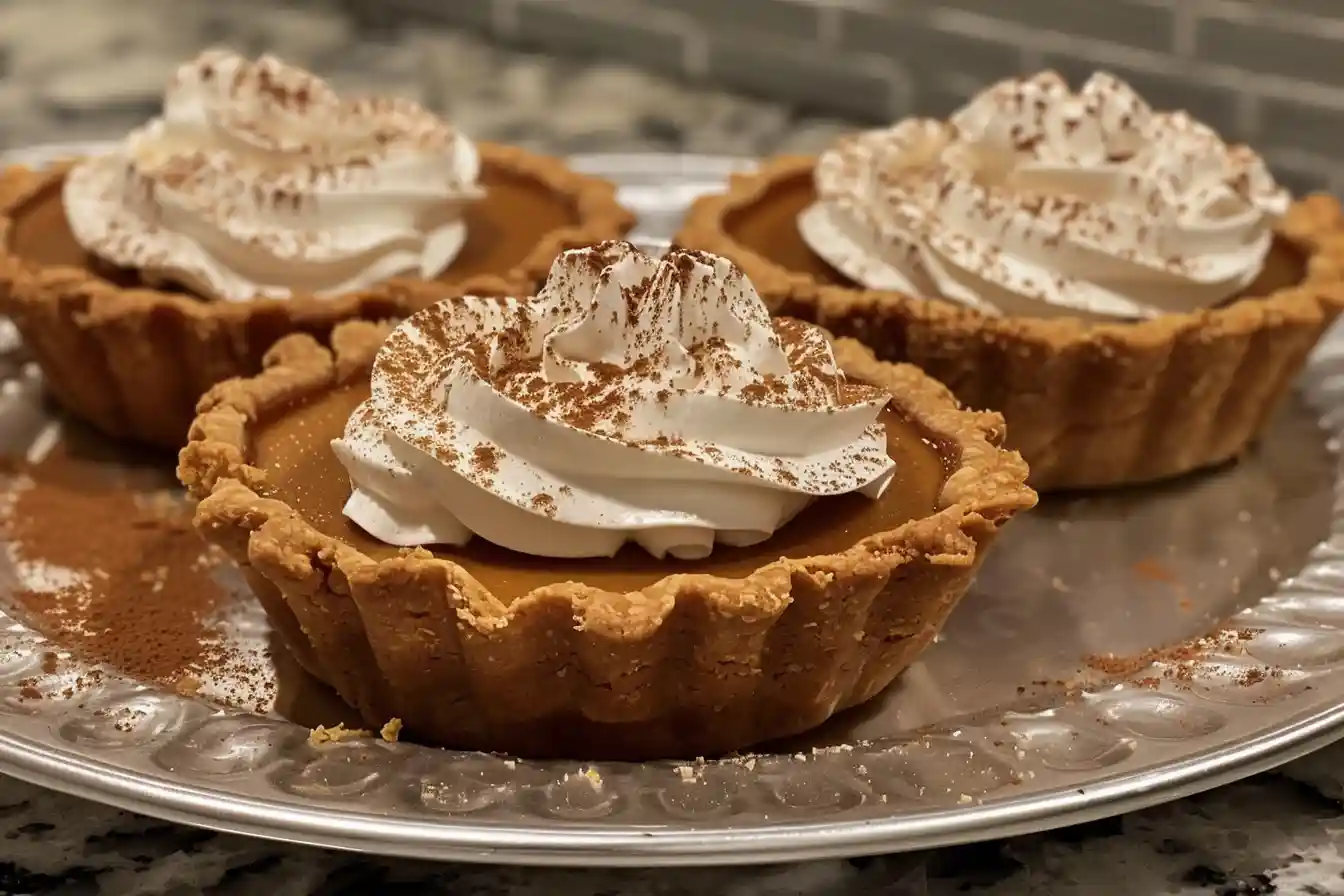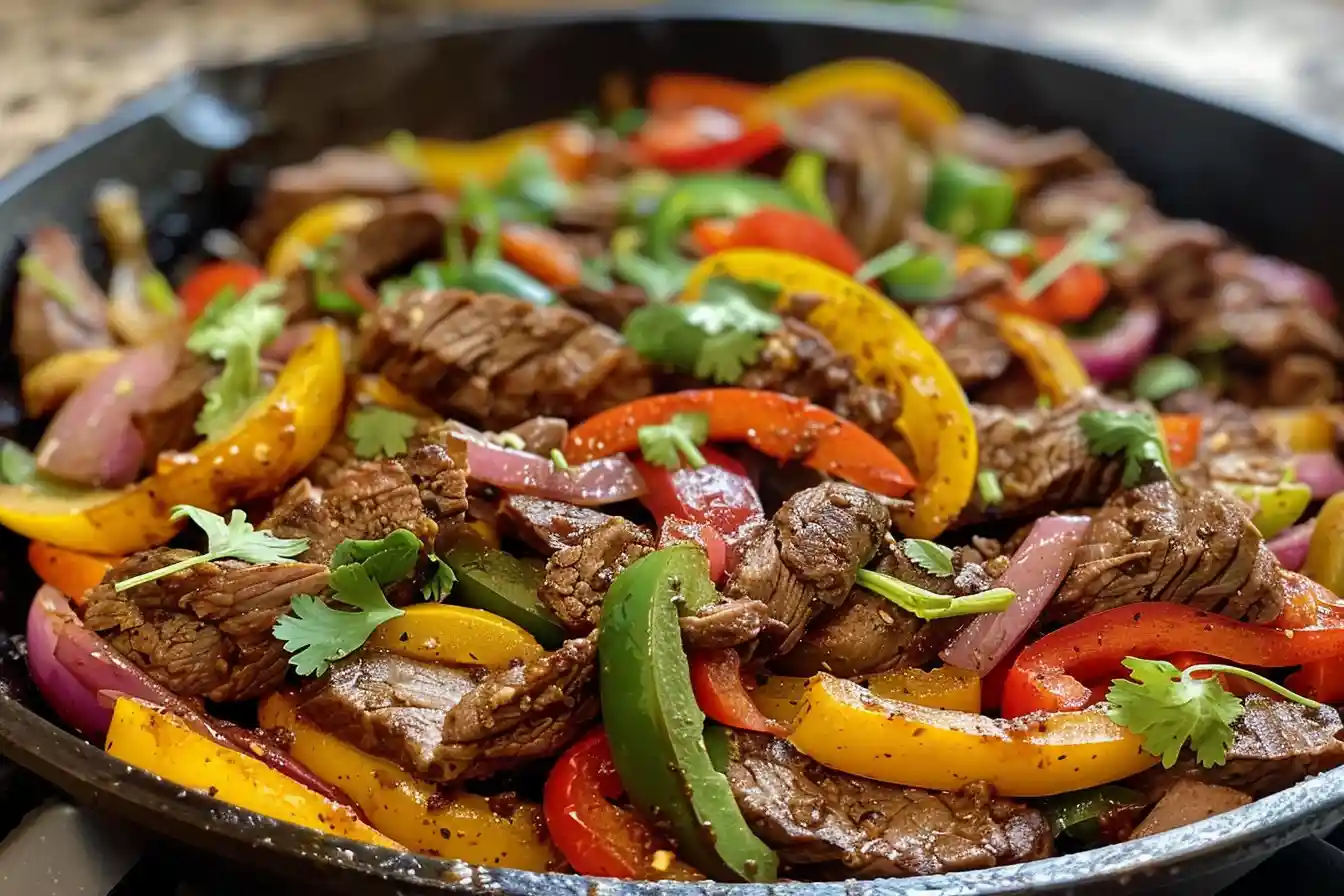When it comes to baking, the question on every cookie lover’s mind is often, What is the secret to making cookies soft and chewy? Whether you’re a seasoned baker or just starting, achieving that perfect balance between a soft, tender center and a slightly crisp edge can be elusive.
But don’t worry—this guide will unravel the mysteries behind those ideal cookies, providing you with the tips, techniques, and science to master them every time.
Understanding the Basics of Cookie Texture
Before diving into the specifics, it’s crucial to understand what makes cookies soft and chewy. The texture of cookies is influenced by a combination of factors, including the ingredients, baking process, and even how the dough is handled.
Let’s break down these elements to see how they contribute to the softness and chewiness that we all love.
The Role of Ingredients
Every ingredient in a cookie recipe has a specific function. The type and proportion of these ingredients can drastically affect the texture of your cookies.
- Flour: The type of flour used can greatly impact your cookies’ texture. All-purpose flour is the most commonly used, but substituting a portion with cake flour, which has a lower protein content, can result in a softer cookie.
- Fat: Butter and shortening are the fats typically used in cookie recipes. Butter, with its water content, creates steam during baking, which helps cookies rise and gives them a tender crumb. Shortening, on the other hand, is 100% fat, which can make cookies softer and prevent them from spreading too much. The secret is often in using a mix of both to achieve the perfect texture.
- Sugar: The type of sugar used is another key factor. Brown sugar contains molasses, which not only adds moisture but also acidity, helping to keep cookies soft. White sugar, in contrast, contributes to spreading and a slightly crisper texture. To make cookies soft and chewy, consider using more brown sugar than white sugar.
- Eggs: Eggs add moisture and act as a binding agent in cookies. The yolk, rich in fat, helps make the cookies softer, while the egg white can contribute to a chewier texture. Using an extra egg yolk or reducing the egg whites can make a noticeable difference.
- Leavening Agents: Baking soda and baking powder are common leavening agents in cookies. Baking soda, which is alkaline, helps cookies spread and can also promote browning, adding to the flavor complexity. Baking powder, which includes an acid, can contribute to a fluffier texture.
- Liquid Ingredients: Adding a small amount of liquid, like milk or water, can introduce steam during baking, helping to make the cookies soft.
Baking Techniques for Soft and Chewy Cookies
Apart from ingredients, the technique you use to bake your cookies plays a crucial role. Even the perfect dough can turn into a disappointing batch if not baked properly.
Mixing and Dough Preparation
- Creaming the Butter and Sugar: The creaming process is when you beat butter and sugar together until light and fluffy. This step is critical as it creates air pockets in the dough, which can expand during baking, making the cookies tender. Over-mixing can lead to too much air, making cookies cakier rather than chewy.
- Chilling the Dough: Chilling the cookie dough before baking solidifies the fat in the cookies. As a result, it takes longer for the fat to melt during baking, which helps to keep the cookies from spreading too thin. This also gives the flour time to hydrate fully, which can improve the texture of the cookies, making them chewier.
- Forming the Dough Balls: The size and shape of your cookie dough balls can also influence texture. Larger balls of dough will spread less and tend to have softer centers. If you want chewier cookies, aim to make your dough balls taller rather than wider, which will help control the spread during baking.
Baking Process
- Baking Temperature: Baking at a lower temperature (around 325°F to 350°F) will cook the cookies more slowly, which helps retain moisture, leading to softer cookies. Higher temperatures tend to set the edges too quickly, creating a crispier texture.
- Baking Time: For soft and chewy cookies, it’s important to bake them just until the edges are set but the centers are still soft. The cookies will continue to cook slightly after being removed from the oven due to residual heat, so taking them out when they appear slightly underbaked can lead to the desired texture.
- Pan Preparation: Using parchment paper or silicone baking mats can help ensure even baking and prevent cookies from spreading too much, contributing to a softer texture.
Storage and Preservation Tips
Even after you’ve mastered the art of baking soft and chewy cookies, proper storage is key to maintaining that texture. Here’s how to keep your cookies at their best:
- Cool Completely: Allow cookies to cool completely on a wire rack before storing them. This prevents steam from being trapped in the container, which can make cookies soggy.
- Storage Containers: Store cookies in an airtight container to prevent them from drying out. If you need to stack the cookies, place a sheet of wax paper between layers to prevent them from sticking together.
- Bread Trick: Place a slice of bread in the container with the cookies. The bread will absorb any excess moisture and help keep the cookies soft for a longer period.
- Freezing Cookies: If you need to store cookies for an extended period, freezing is an excellent option. Freeze them in a single layer on a baking sheet before transferring them to an airtight container or freezer bag. This prevents them from sticking together and keeps them fresh.

Troubleshooting : Common Issues and Solutions
Even with the best ingredients and techniques, sometimes things can go wrong. Here are some common issues that can affect the softness and chewiness of your cookies, along with solutions to fix them.
Cookies Are Too Hard
If your cookies turned out too hard, there could be several reasons for this:
- Overbaking: The most common cause of hard cookies is overbaking. Remember to remove the cookies from the oven when they appear slightly underbaked.
- Too Much Sugar: Using too much sugar, especially white sugar, can lead to a hard and crisp cookie. Adjust the sugar ratio to include more brown sugar for a softer result.
- Insufficient Fat: If you used too little butter or shortening, your cookies might be dry and hard. Ensure you’re using the correct amount of fat to keep them tender.
Cookies Are Too Soft
On the other hand, if your cookies are too soft and fall apart:
- Underbaking: While underbaking slightly is good, underbaking too much can leave cookies too soft and doughy. Ensure the edges are set before removing them from the oven.
- Too Much Liquid: Adding too much milk, water, or other liquid can make cookies overly soft. Be cautious with the amount of liquid added to the dough.
Cookies Spread Too Much
If your cookies spread too much during baking and became thin:
- Warm Dough: Dough that is too warm will spread more quickly in the oven. Chilling the dough before baking can help control this.
- Too Little Flour: If your dough has too little flour, the cookies may spread too much. Make sure to measure your flour accurately, ideally using a kitchen scale.
Cookies Are Too Thick
If your cookies didn’t spread enough and turned out too thick:
- Excess Flour: Using too much flour can prevent cookies from spreading properly, leading to a thicker texture. Ensure your flour measurements are precise.
- Cold Dough: While chilling the dough is recommended, if the dough is too cold, it may not spread properly. Allow the dough to sit at room temperature for a few minutes before baking.
Advanced Techniques for Soft and Chewy Cookies
For those who want to take their cookie baking to the next level, there are some advanced techniques and tips to ensure your cookies are as soft and chewy as possible.
Adding Cornstarch
One secret to making cookies soft and chewy is adding a small amount of cornstarch to the dough. Cornstarch helps to tenderize the dough, resulting in a softer cookie. It also has the added benefit of helping cookies maintain their shape and thickness.
Using Pudding Mix
Another trick is to incorporate instant pudding mix into the cookie dough. The pudding mix adds both flavor and moisture, resulting in cookies that stay soft and chewy for days. Vanilla pudding mix is a popular choice, but you can experiment with other flavors depending on your recipe.
Using Browned Butter
For a deeper, richer flavor while still keeping cookies soft and chewy, try using browned butter. To brown butter, melt it in a saucepan over medium heat, swirling the pan occasionally until the butter develops a nutty aroma and turns golden brown. Let it cool slightly before incorporating it into your cookie dough. Browned butter adds a complex, toasty flavor that can make your cookies truly exceptional.
Incorporating Honey or Corn Syrup
Adding a small amount of honey or corn syrup to the dough can help retain moisture, contributing to a chewier texture. These ingredients are humectants, meaning they attract and retain moisture, which helps keep your cookies soft.
Experimenting with Sugar Ratios
As mentioned earlier, the type of sugar you use plays a significant role in cookie texture. For softer and chewier cookies, experiment with the ratio of brown sugar to white sugar. Increasing the amount of brown sugar while reducing white sugar can lead to a moister and more tender cookie.
Variations on Soft and Chewy Cookies
While classic chocolate chip cookies are often the first choice, there are countless variations of soft and chewy cookies that you can explore. Here are a few ideas :
Chewy Oatmeal Cookies
Oatmeal cookies are naturally chewy thanks to the oats, but you can make them even softer by using brown sugar, adding a little honey, and not overbaking. Add-ins like raisins, chocolate chips, or nuts can add extra texture and flavor.
Soft and Chewy Snickerdoodles
Snickerdoodles are known for their tangy flavor from cream of tartar and their soft, pillowy texture. To enhance this, you can incorporate a little cornstarch into the dough and underbake them slightly for an even softer cookie.
Peanut Butter Cookies
Peanut butter cookies can sometimes be dense, but by adding an extra egg yolk and slightly underbaking, you can achieve a soft and chewy texture. For a twist, try adding chocolate chips or dipping half the cookie in melted chocolate.
Double Chocolate Cookies
For chocolate lovers, double chocolate cookies made with cocoa powder and chocolate chips are a dream. To keep them soft and chewy, use a combination of brown sugar and white sugar, and add a touch of cornstarch to the dough.
The Science Behind Soft and Chewy Cookies
To truly understand the secret behind making cookies soft and chewy, it’s helpful to dive into the science of baking.
Here’s how some of the key ingredients and processes work on a molecular level :
Maillard Reaction
The Maillard reaction is a chemical reaction between amino acids and reducing sugars that gives browned foods their distinctive flavor. In cookies, this reaction occurs as they bake, contributing to the complex flavors. However, the longer the cookies are exposed to heat, the more moisture they lose, which is why controlling the baking time is crucial for softness.
Moisture Retention
Moisture is the key to soft cookies. Ingredients like brown sugar, honey, and corn syrup are hygroscopic, meaning they attract water. This helps keep the cookies moist. Additionally, underbaking slightly helps trap moisture inside the cookie, contributing to a soft, chewy texture.
Gluten Development
Gluten, formed when flour is mixed with water, provides structure to baked goods. In cookies, you want to develop just enough gluten to give the cookie structure without making it tough.
Over-mixing the dough can lead to too much gluten development, resulting in a firmer, less chewy cookie. Using lower-protein flours like cake flour can help keep cookies tender.

Cookie Pairings : What Goes Well with Soft and Chewy Cookies?
While soft and chewy cookies are delightful on their own, pairing them with the right beverages or accompaniments can elevate the experience. Here are some ideas:
Milk
There’s a reason milk and cookies are a classic combination. The rich, creamy taste of milk pairs perfectly with the sweetness of cookies. Whether you prefer whole milk, almond milk, or oat milk, a cold glass is the ideal companion to a warm, soft cookie.
Coffee or Tea
The bitterness of coffee or the herbal notes of tea can balance the sweetness of cookies. A cup of black coffee or a strong brew of Earl Grey can complement the rich flavors of chocolate chip or peanut butter cookies.
Ice Cream
For a more indulgent treat, serve your soft and chewy cookies with a scoop of ice cream. Vanilla is a classic choice, but you can experiment with other flavors like caramel, mint chocolate chip, or coffee ice cream to create a delicious dessert.
Fruit
Fresh fruit, such as strawberries, raspberries, or bananas, can provide a refreshing contrast to the richness of cookies. Consider pairing oatmeal cookies with a side of fresh fruit for a balanced snack.
The History and Cultural Significance of Cookies
Cookies have a rich history that dates back centuries, with different cultures around the world developing their own unique versions. The word “cookie” comes from the Dutch word “koekje,” meaning “little cake.” Dutch settlers brought these treats to America, where they quickly became a staple.
In the United States, the chocolate chip cookie is perhaps the most iconic, invented by Ruth Wakefield in the 1930s. However, cookies in various forms—such as shortbread, biscotti, and macarons—have long been cherished in European cultures.
The texture of cookies has always been a point of preference, with some cultures favoring crisp, thin cookies while others prefer soft, chewy ones. In the U.S., the trend toward soft and chewy cookies has grown over the past few decades, with many home bakers seeking to replicate the texture of their favorite store-bought or bakery cookies at home.
How to Make Your Cookies Healthier ?
While cookies are undoubtedly a treat, there are ways to make them a bit healthier without sacrificing that soft and chewy texture. Here are some tips:
Use Whole Wheat Flour
Substitute part or all of the all-purpose flour with whole wheat flour. Whole wheat flour adds fiber and nutrients to your cookies, and its slightly nutty flavor can complement ingredients like chocolate and nuts. Keep in mind that whole wheat flour absorbs more moisture, so you may need to adjust the liquid in your recipe to maintain a soft texture.
Reduce Sugar
You can often reduce the sugar in a cookie recipe by about 25% without significantly altering the texture. Consider using natural sweeteners like honey or maple syrup for part of the sugar content.
Add Nutritious Ingredients
Incorporating ingredients like oats, nuts, seeds, or dried fruit can boost the nutritional value of your cookies. Oats, in particular, add both fiber and a pleasant chewiness.
Use Dark Chocolate
If you’re making chocolate chip cookies, opt for dark chocolate instead of milk chocolate. Dark chocolate has less sugar and more antioxidants, making it a slightly healthier choice.
Conclusion: Mastering the Art of Soft and Chewy Cookies
So, what is the secret to making cookies soft and chewy? It’s a combination of using the right ingredients, mastering the correct techniques, and understanding the science behind baking. By paying attention to the details—such as the type of sugar you use, the temperature of your dough, and the baking time—you can achieve cookies that are perfectly soft and chewy every time.
Whether you’re baking for a special occasion, for friends and family, or just for yourself, these tips and techniques will help you create cookies that everyone will love. Remember, baking is as much about the process as it is about the final product, so enjoy the journey and the sweet rewards that follow.





